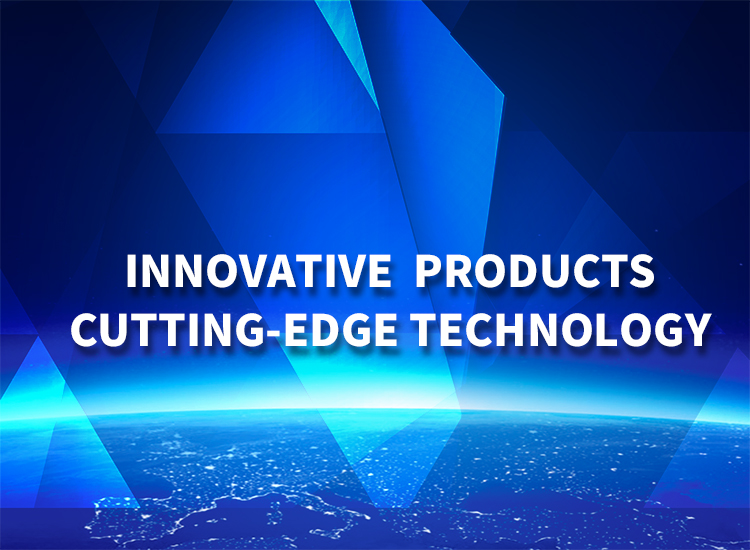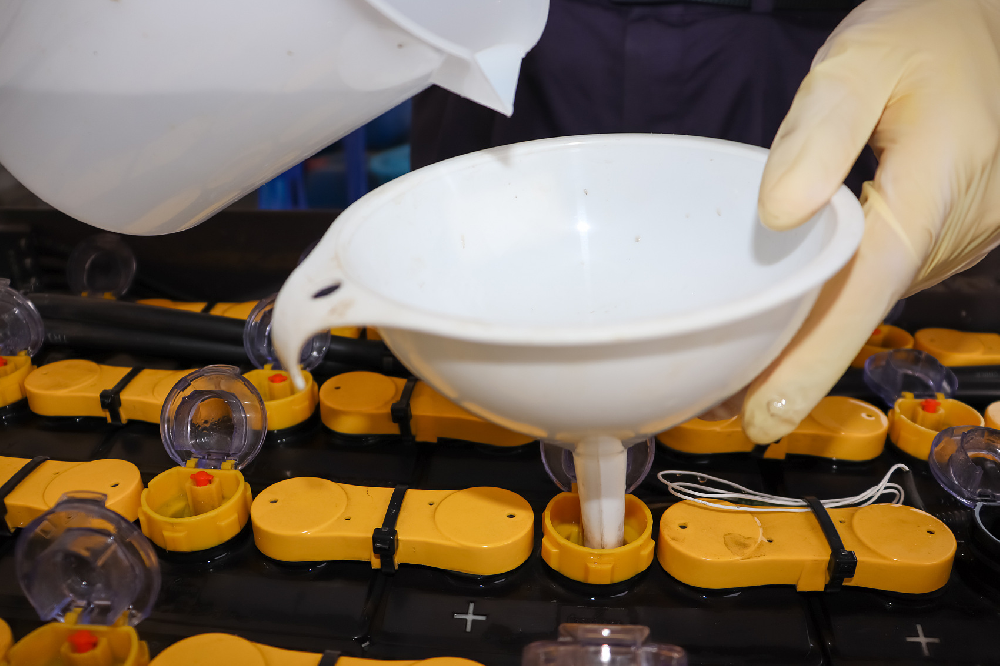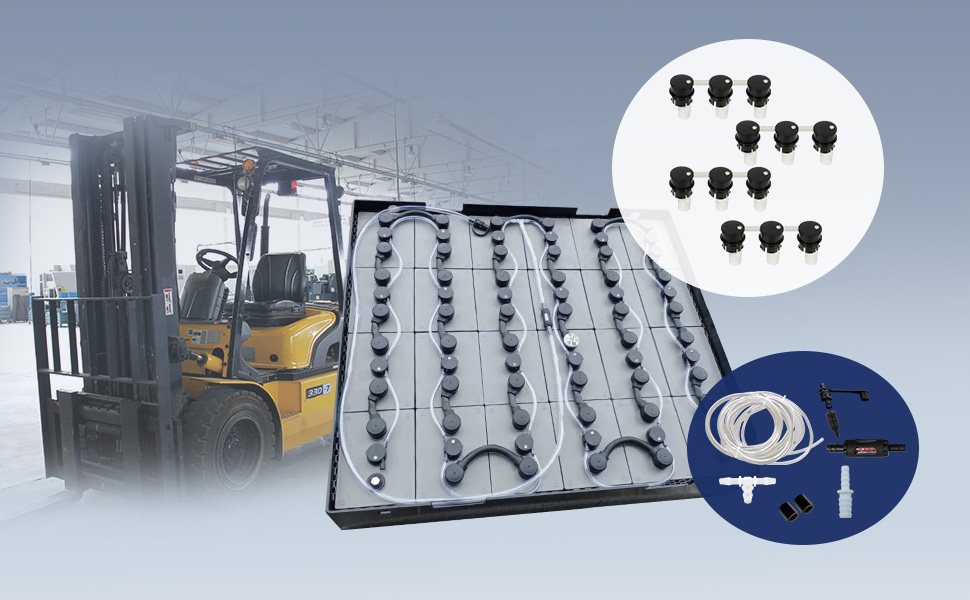欢迎您访问湖北联鸿能源科技有限公司网站,我司主营汽车蓄电池配件、工业蓄电池维护保养产品
全国咨询热线:0710-3313598


 Technology
TechnologyBattery maintenance and adding water work is a part of many people do not pay enough attention to. When adding water to the battery, if you add too much water, it will have a negative effect. Adding too much water will lead to the imbalance of the electrolyte ratio, which will affect the charge and discharge function of the battery. This is because the concentration of sulfuric acid in the electrolyte increases, which may cause corrosion or damage to the electrode plate. Adding too much water will also cause problems such as deformation, splitting, or leakage of the battery shell, which will shorten the battery life and may even cause safety risks. Here is a detailed introduction to how to correctly add water.
Battery water increase will have the following consequences:
1. It oozes out when charging. The electrolyte must be made of chemically pure sulfuric acid (or special electrolyte) and distilled water. The electrolyte density is generally 1.25-1.29g\/cm3(at 15°c). Industrial sulfuric acid and general water, due to impurities such as iron and copper, will cause self-discharge and plate damage, can not be used for batteries;
2.the battery is almost no electricity, the specific gravity of the electrolyte is not less than 1.19, adding liquid, choose to add distilled water near the lowest scale line, and then add pure sulfuric acid (or special electrolyte), so that the specific gravity is about 1.2, the amount of liquid does not exceed the upper limit scale;
3.after the electrolyte is injected into the battery, the battery is left to stand for 3-6h, until the electrolyte temperature is lower than 35°c to charge. Charging time is about 3-4h. During the charging process, when the single cell voltage of the battery rises by 2.4v, more bubbles begin to appear in the electrolyte, and the charging current should be halved. After the end of charging, discharge test should be carried out to avoid the appearance of vulcanization damage of the battery is only surface charging, the actual can not be used. Therefore, it is necessary to observe the battery before charging if there is sulfide condensation, should be replaced;

So, what if the battery is too full of water?
First of all, the excess water should be removed in time, and the excess water can be sucked out through a straw. At the same time, keep the inside of the battery dry and clean to avoid moisture accumulation and corrosion. Finally, pay attention to adding a small amount of water several times, and regularly check the electrolyte situation of the battery to avoid excessive addition of distilled water.
In short, proper battery maintenance is the key to ensure the normal operation of electric vehicles and extend battery life. Therefore, when adding water to the battery, we should pay attention to the appropriate amount and uniform rehydration, and regularly clean the battery shell and terminals to ensure the safety performance and service life of the battery.

How to solve the problem of uneven water addition?
Manual water capacity often appears water omission, less, more and other problems, will cause battery damage, affect its service life, for this problem, a set of automatic water supply system can be easily solved, complete replacement of manual water maintenance: When to add water, how to add, how much to add the problem, completely complete the automatic replacement of the manual link in the water adding maintenance, the manual water adding maintenance into the automatic maintenance of equipment.
The automatic battery water refill system can monitor the battery water shortage status in real time, automatically replenish water, and automatically stop when full of water. After the device is installed, the electrolyte level can be kept in a healthy state throughout the whole process to ensure the stable and balanced characteristics of the battery electrolyte, optimize the battery service efficiency, and effectively extend the service life of the battery.